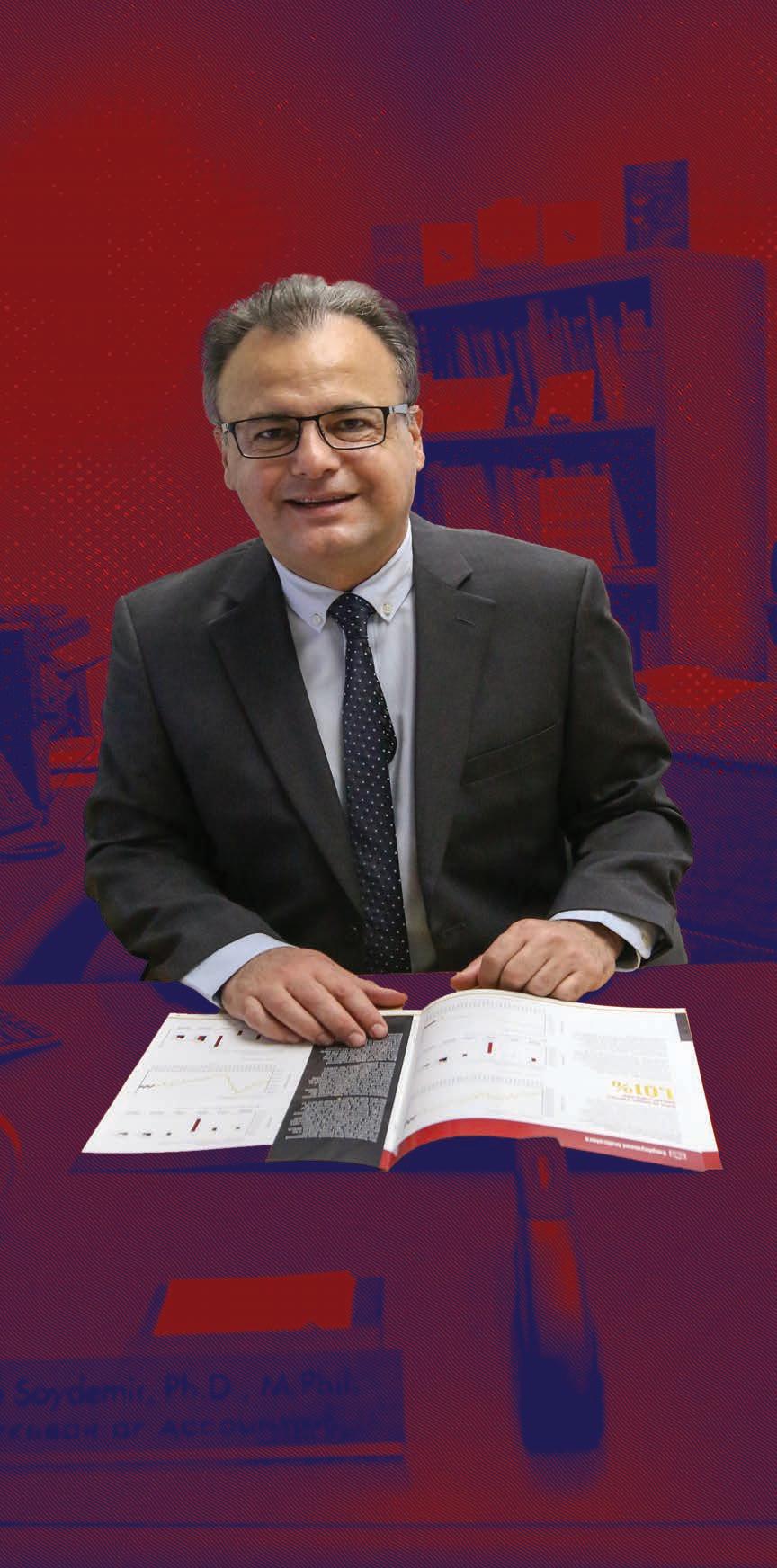
5 minute read
Forecasting the Central Valley's Bottom Line
For more than a decade, Foster Farms Endowed Professor of Business Economics Gökçe Soydemir and his team have analyzed data to help regional businesses with decision-making that can impact their bottom line.
By Donna Birch Trahan
Advertisement
When Gökçe Soydemir talks about the San Joaquin Valley’s economy, people listen.
For just over a decade, shortly after he joined Stanislaus State as the College of Business Administration’s inaugural Foster Farms endowed professor of business economics, Soydemir and his team of student assistants have produced the San Joaquin Valley Business Forecast.
Published annually in the fall with mid-year updates, the report provides detailed information about emerging trends in the Valley’s economy. The report encompasses data from eight counties in the Valley that include Stanislaus, San Joaquin, Merced, Madera, Fresno, Tulare, Kings and Kern counties.
With Soydemir leading the charge, the team analyzes indicators in several key areas: employment, inflation and prices, banking and capital markets and housing. The results serve as an economic bellwether for the Central Valley and give businesses, investors and consumers an idea of what may occur in the coming year.
The Foster family established an endowed professorship at Stan State because they saw a need for business forecast reports that focused on the Central Valley and supported the success of area businesses in their decision-making. Foster Farms, California’s largest poultry processor, is headquartered in Livingston.
“I’m grateful for the endowment because it’s made all that we do possible,” Soydemir said.
The report is a resource that can help businesses, investors, consumers and others make informed choices that can affect their bottom line.
Since its inception, the Business Forecast’s impact and reach have expanded.
Over the years, the forecast initiative has employed more than 50 student assistants and earned $200,000 in grants and contracts. More than seven administrative and academic departments, along with faculty and staff, have contributed to producing the report.
“We’ve become more visible and have gotten media calls throughout California and beyond,” Soydemir said, noting that the forecast has appeared in media outlets and personal blogs more than 225 times.
“We’ve gotten a number of grants that we wouldn’t have been able to get by focusing only on one or two counties,” he said. “For example, we received one grant because we were looking at Bakersfield and the Congressional Quarterly called us to find out what’s happening there.”
Soydemir has presented the report’s findings at numerous venues, from local governmental agencies and chambers of commerce to public utilities commissions and conferences. He has also served on the mayor’s economic task force for the city of Turlock.
Soydemir has been a scholar in the field of finance and economics since the mid-1980s. He earned his bachelor’s degree in economics from Middle East Technical University (METU) in Ankara, Turkey, a Master of Philosophy in International Finance from Glasgow University in Scotland and his doctorate in economics from Claremont Graduate School. Prior to joining Stan State, Soydemir was a professor of finance in the Department of Economics and Finance at the University of Texas-Rio Grande Valley.
With expertise in econometrics — which uses economic theory, mathematics and statistical inference to quantify economic events and allows practitioners to extract useful information from available data — Soydemir joined the University in 2011 and produced the first Business Forecast in 2012, a few years after the Great Recession. The recession was the biggest economic downturn to occur in the United States since the Great Depression in the 1930s.
According to the U.S. Bureau of Labor Statistics, during the Great Recession, the United States lost more than 8.7 million jobs, doubling the unemployment rate. Additionally, U.S. households lost approximately $19 trillion in net worth as the stock market plunged and homeowners saw their property values drop, leaving many underwater. The Valley, along with the rest of the country, saw a record number of home foreclosures.
When Soydemir released the first forecast report in 2012, three years after the Great Recession ended, a lot of people were still pessimistic about the economy.
“It was hard to convince people that things would eventually get better,” he said. “At that time, I was interested in finding out long-term forecasts to see when it would hit again.”
Fast forward 10 years: the San Joaquin Valley’s economy, along with the rest of the nation, wavered again, this time triggered by the COVID-19 pandemic that literally brought California and the nation to a standstill from March 2020 to June 2021.
This time, however, the number of people losing their homes was nothing like it was in the early 2000s, due to interventions by the federal government. And, while the unemployment rate has gradually risen in recent months, it’s nothing like it was during the Great Recession.
“The Valley’s economy has become more resilient and diversified and new businesses have come here since we started doing this work,” Soydemir said. “The unemployment rate has been low.”
Soydemir is proud of the work he and others have done over the years, but he is especially gratified by being able to provide Stan State students opportunities to do analysis work. Each year, he has hired anywhere from three to five students to work on the report, and not all of them have been business majors.
“We’ve hired liberal studies, math, history and English majors,” Soydemir said. “We want to give opportunities to students across the spectrum. Many have gone on to find good jobs. They are doing data analysis, and sometimes, they are nervous.
“But above all, the experience gives them opportunities to do hands-on work, learn and ultimately be successful.”










